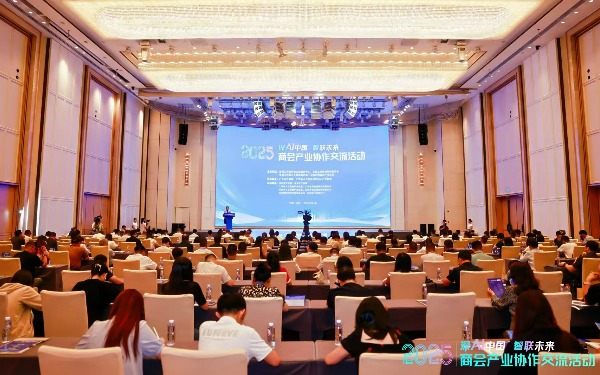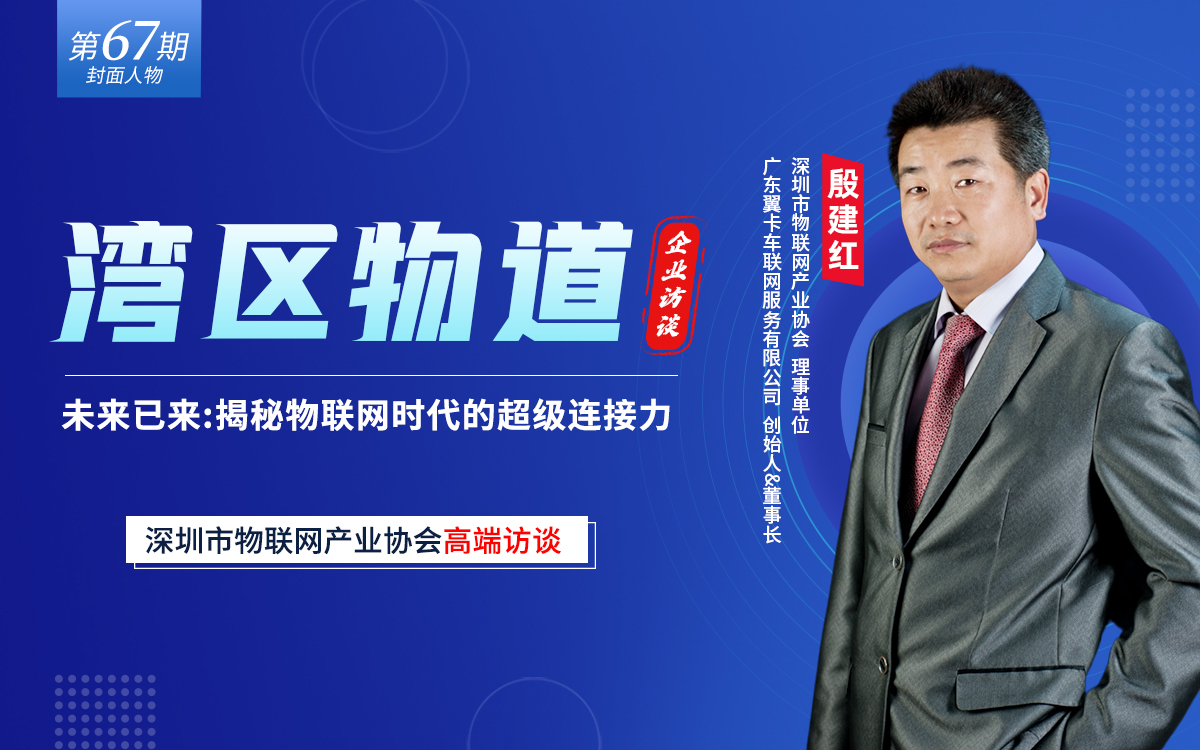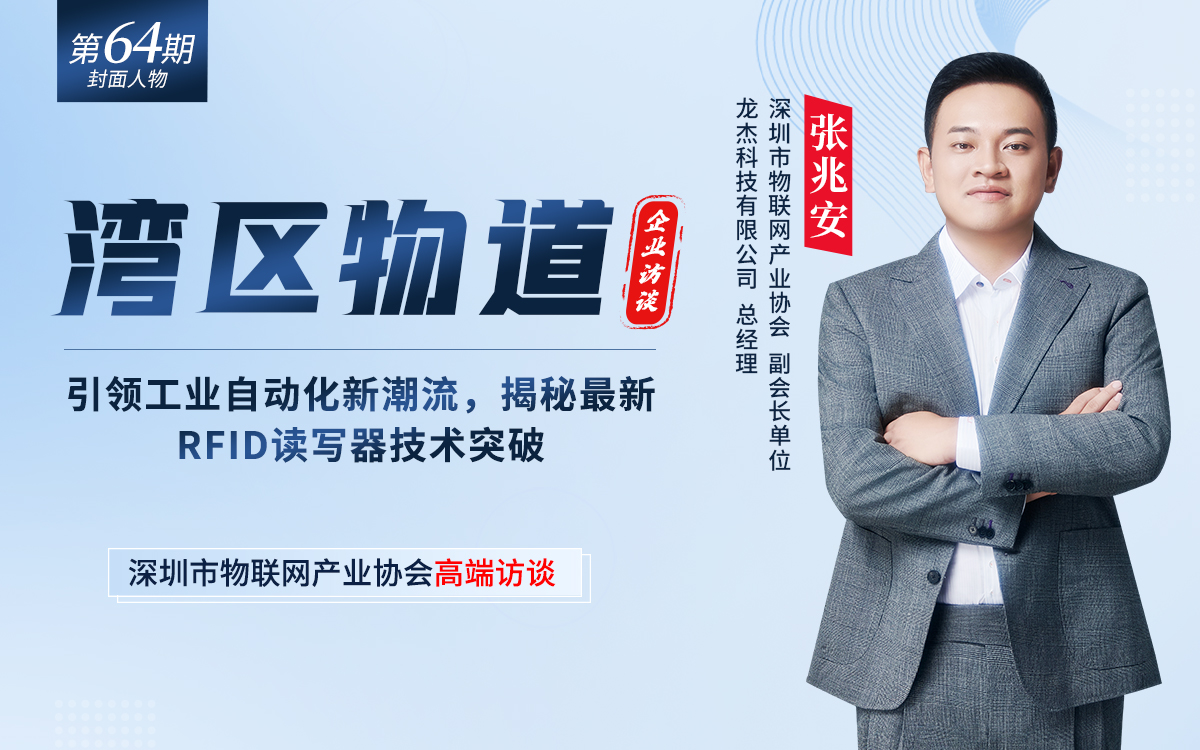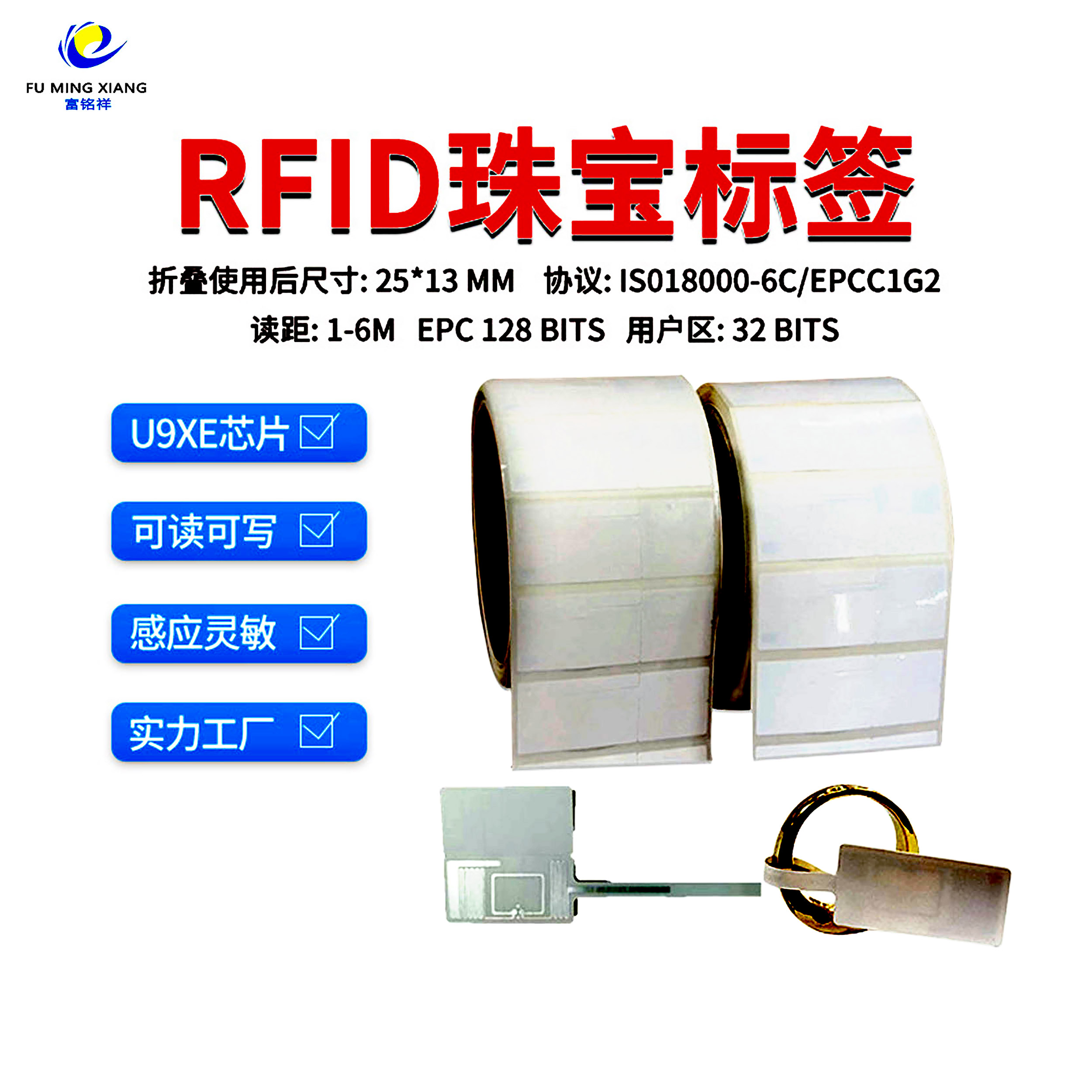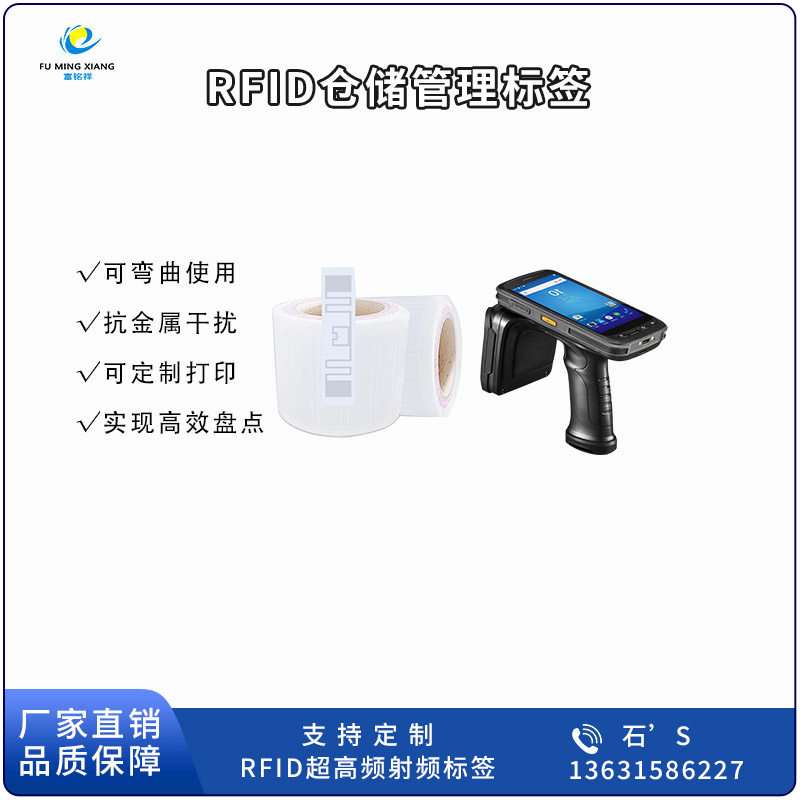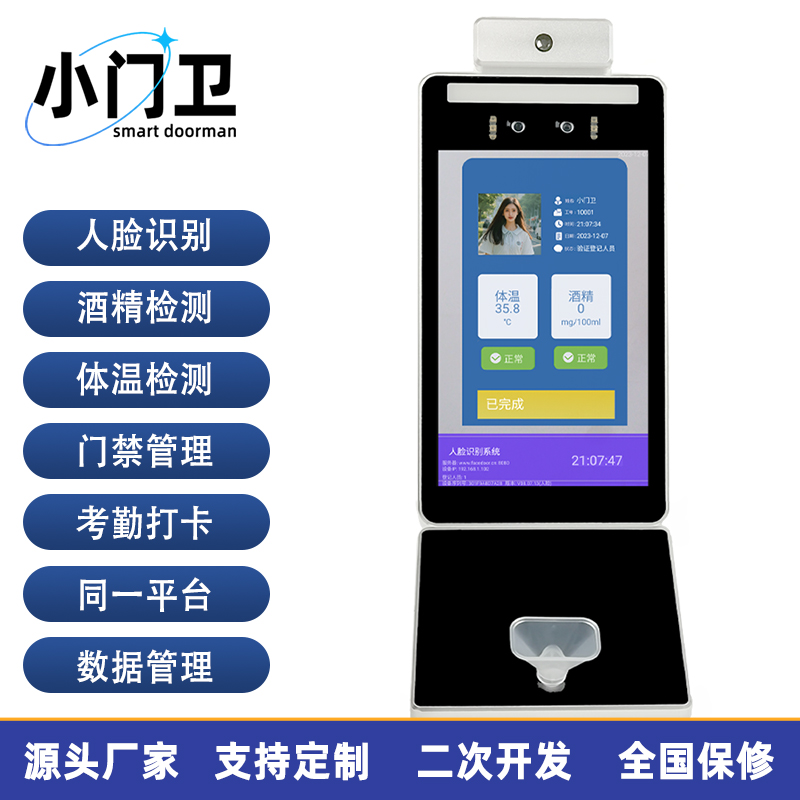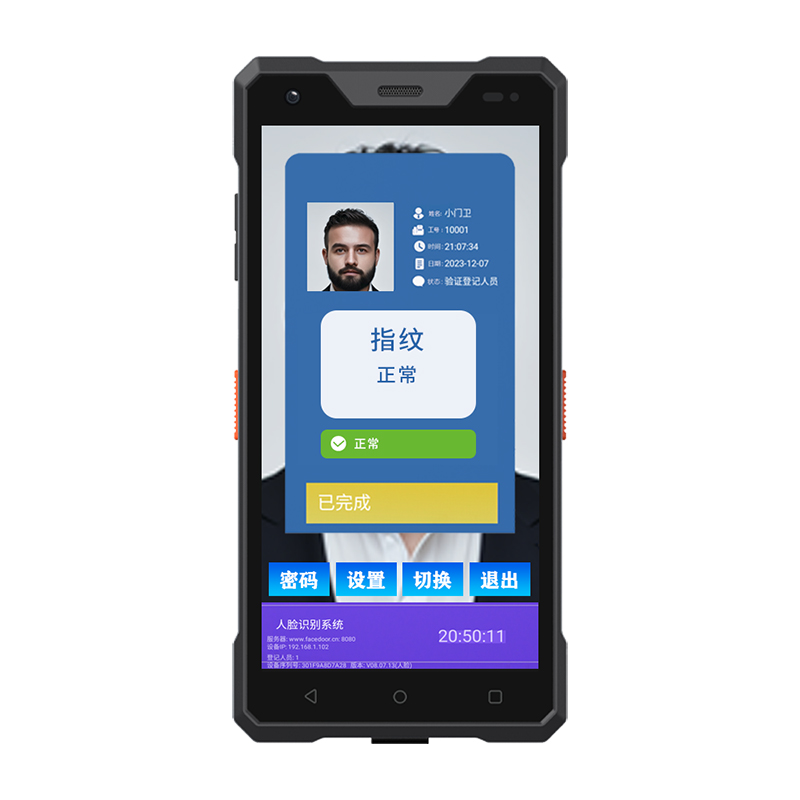【灣區(qū)物道】聚焦工業(yè)4.0核心需求,解碼半導(dǎo)體破局路徑——專訪意法半導(dǎo)體 Allan Lagasca
灣區(qū)物道
深圳市物聯(lián)網(wǎng)產(chǎn)業(yè)協(xié)會(huì)的精品欄目《灣區(qū)物道》系列訪談,對(duì)話專家學(xué)者、政府官員、灣區(qū)商會(huì)協(xié)會(huì)及企業(yè)家,解讀和宣傳扶持政策;分析市場(chǎng)產(chǎn)業(yè)技術(shù)發(fā)展情況;助力物聯(lián)網(wǎng)生態(tài)體系建設(shè)。
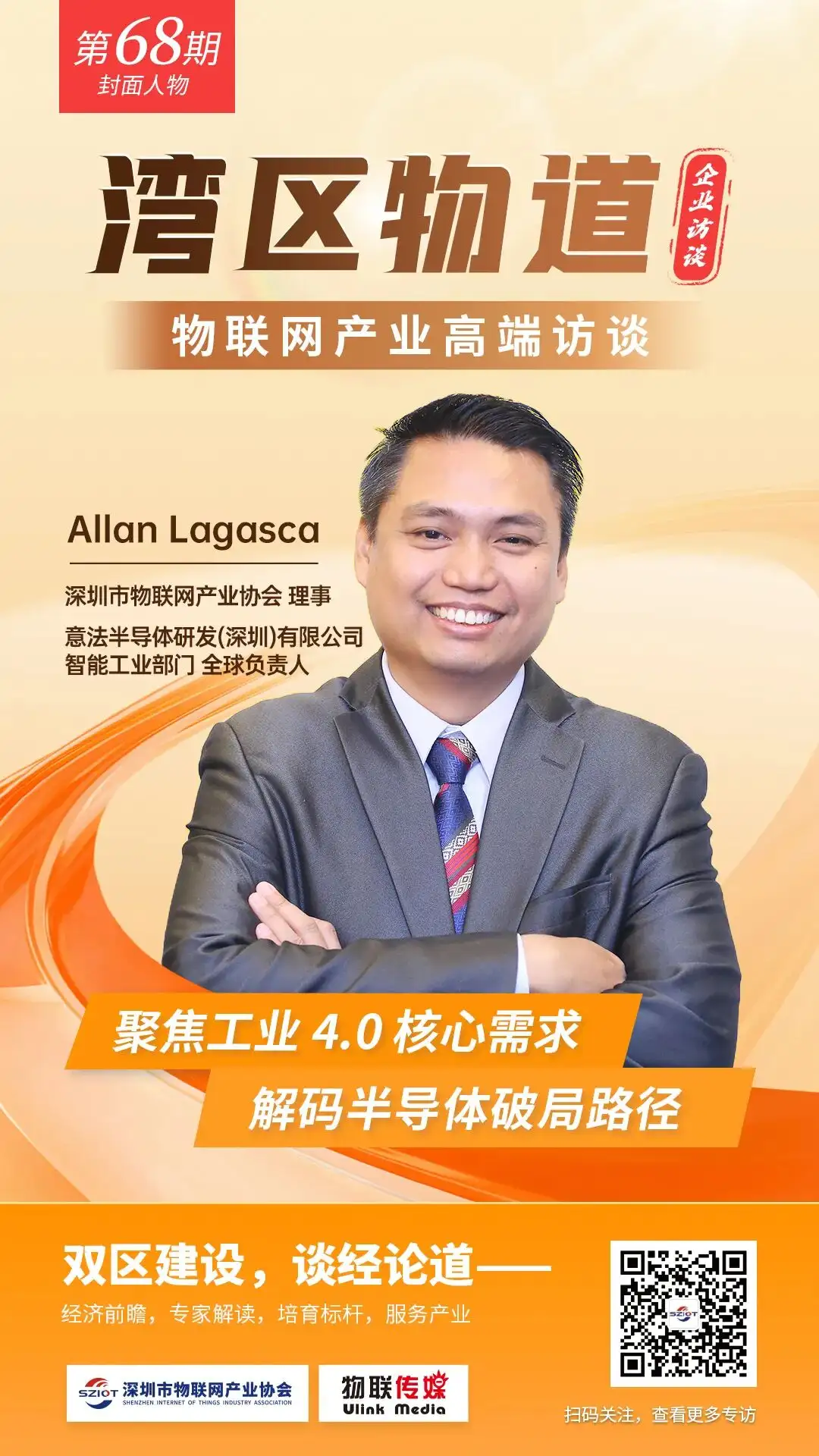
當(dāng)前半導(dǎo)體技術(shù)正從產(chǎn)業(yè) “支撐者” 加速轉(zhuǎn)變?yōu)?“驅(qū)動(dòng)者”,成為破解工業(yè)自動(dòng)化升級(jí)、樓宇場(chǎng)景協(xié)同、機(jī)器人自主化等核心需求的關(guān)鍵變量。與此同時(shí),系統(tǒng)可靠性、功能安全與網(wǎng)絡(luò)安全的三重挑戰(zhàn),也讓半導(dǎo)體芯片級(jí)設(shè)計(jì)與安全策略成為產(chǎn)業(yè)高質(zhì)量發(fā)展的 “必修課”。
這是『灣區(qū)物道』的第68期,本期訪談我們對(duì)話了深圳市物聯(lián)網(wǎng)產(chǎn)業(yè)協(xié)會(huì)理事單位意法半導(dǎo)體研發(fā)(深圳)有限公司智能工業(yè)部門的全球負(fù)責(zé)人 Allan Lagasca,本次采訪,Allan深入分享了ST在半導(dǎo)體產(chǎn)業(yè)中的布局及其對(duì)未來(lái)發(fā)展的獨(dú)到見解,希望給企業(yè)帶來(lái)更多啟發(fā)和價(jià)值。

Allan Lagasca ST 智能工業(yè)部門的全球負(fù)責(zé)人
? Allan Lagasca 是智能工業(yè)部門的全球負(fù)責(zé)人,并推動(dòng)了意法半導(dǎo)體機(jī)器人部門戰(zhàn)略計(jì)劃的戰(zhàn)略。
Allan Lagasca is Global leader of Smart Industrials Segment organization and driving the strategy of the Robotics Segment Strategic Program in STMicroelectronics.
? Allan 于2003年加入意法半導(dǎo)體,最初擔(dān)任臺(tái)灣地區(qū)高級(jí)應(yīng)用工程師。2011年晉升為區(qū)域應(yīng)用工程經(jīng)理,負(fù)責(zé)IPD公司在中國(guó)大陸、南亞及印度地區(qū)的應(yīng)用工程團(tuán)隊(duì)。2014年調(diào)任深圳,出任系統(tǒng)工程與戰(zhàn)略項(xiàng)目應(yīng)用總監(jiān),至今仍擔(dān)任該職。其團(tuán)隊(duì)業(yè)務(wù)版圖持續(xù)擴(kuò)展,涵蓋工業(yè)自動(dòng)化與機(jī)器人技術(shù)、智能家居與樓宇自動(dòng)化領(lǐng)域,并逐步拓展至醫(yī)療健康系統(tǒng)。艾倫的職業(yè)生涯始于艾斯特克/艾默生公司,在電子與半導(dǎo)體行業(yè)積累了超過(guò)25年的豐富經(jīng)驗(yàn)。
Allan joined STMicroelectronics in 2003 as a Senior Application Engineer in Taiwan and moving up the ladder as regional FAE manager in 2011 covering the Greater China, South Asia and India FAE team for IPD. In 2014, He moved to Shenzhen and became Application Director of the System Engineering and Strategic Programs. He holds the position of Application Director to date with the team increasing its presence in Industrial Automation and Robotics, Smart Home & Building Automation and expanding to Medical and Healthcare systems. Allan started his career in Astec/Emerson with career experience of more than 25 years in Electronics and Semiconductor Industry.
? 今年三月,他榮獲CAIMRS(中國(guó)自動(dòng)化與智能制造研究峰會(huì))頒發(fā)的2024-25年度創(chuàng)新大獎(jiǎng)“年度人物”稱號(hào)。
He was recently named “The Person of the Year” 2024-25 in the Innovation Award category by CAIMRS(China Automation and Intelligent Manufacturing Research Summit) in March.
1、在推動(dòng)工業(yè)4.0智能化升級(jí)中,半導(dǎo)體技術(shù)正從“支撐者”向“驅(qū)動(dòng)者”轉(zhuǎn)變。請(qǐng)您從意法半導(dǎo)體的視角,分享貴公司在工業(yè)自動(dòng)化與智能制造中比較有突破性的技術(shù)方案?
In promoting the intelligent upgrade of Industry 4.0, semiconductor technology is transitioning from being a supporter to a driving force. From STMicroelectronics’ perspective, could you share some of your company’s breakthrough solutions in industrial automation and smart manufacturing?
〖Allan Lagasca〗:意法半導(dǎo)體(ST)正在積極推動(dòng)工業(yè)4.0的智能升級(jí),利用其先進(jìn)的半導(dǎo)體技術(shù),在工業(yè)自動(dòng)化和智能制造領(lǐng)域從支撐角色轉(zhuǎn)變?yōu)檎嬲耐苿?dòng)者和創(chuàng)新者。除了產(chǎn)品創(chuàng)新投資之外,意法半導(dǎo)體還通過(guò)引入細(xì)分市場(chǎng)戰(zhàn)略計(jì)劃,通過(guò)系統(tǒng)級(jí)方案策略,積極推動(dòng)工業(yè)自動(dòng)化和智能制造的轉(zhuǎn)型。
意法半導(dǎo)體目前可提供在工業(yè)自動(dòng)化的IO-Link主從站全套方案,以及機(jī)器人的關(guān)節(jié)模組和靈巧手,可編程邏輯控制器/運(yùn)動(dòng)控制器等完整的解決方案,并已經(jīng)在市場(chǎng)上得到驗(yàn)證。
STMicroelectronics (ST) is actively driving the intelligent upgrade of Industry 4.0 by leveraging its advanced semiconductor technologies to move from a supporting role to a true enabler and innovator in industrial automation and smart manufacturing. On top of product innovation investments, STMicroelectronics is driving the transformation of industrial automation and smart manufacturing through a system-level approach with the introduction of Segment Strategic Programs.
STMicroelectronics can currently offer a full - set solution for IO - Link master and slave stations in industrial automation, as well as complete solutions like robotic joint modules, dexterous hands, and programmable logic controllers/motion controllers. And these solutions have been verified in the market.
2、樓宇自動(dòng)化正從“單點(diǎn)控制”邁向“全場(chǎng)景智能協(xié)同”,涉及能源管理、環(huán)境感知、安防聯(lián)動(dòng)等多個(gè)維度。意法半導(dǎo)體在樓宇自動(dòng)化中多功能,多品牌融合及節(jié)能高效,推動(dòng)可持續(xù)發(fā)展方面有哪些創(chuàng)新布局?如何平衡高性能與低能耗、成本之間的挑戰(zhàn)?
Building automation is evolving from “single-point control” to “intelligent collaboration across all scenarios,” involving energy management, environmental sensing, and security integration, among other aspects. How is STMicroelectronics innovating in multifunctional integration, multi-brand interoperability, and energy efficiency to promote sustainable development in building automation? How do you balance the challenges of high performance, low power consumption, and cost?
〖Allan Lagasca〗:新樓宇自動(dòng)化正在打破品牌壁壘,從單點(diǎn)控制演變?yōu)榭绺鞣N場(chǎng)景的智能協(xié)作,包括能源管理、環(huán)境感知和安全集成。意法半導(dǎo)體通過(guò)提供 KNX 系統(tǒng)和無(wú)線 Matter 技術(shù)等綜合解決方案來(lái)推動(dòng)樓宇自動(dòng)化領(lǐng)域的創(chuàng)新,這些解決方案可實(shí)現(xiàn)無(wú)縫的多功能集成和多品牌互作性,確保設(shè)備之間的高效通信,培育互聯(lián)的智能生態(tài)系統(tǒng),從而推動(dòng)樓宇自動(dòng)化從“單點(diǎn)控制”向“全場(chǎng)景智能協(xié)同”的演進(jìn)。
同時(shí), 意法半導(dǎo)體利用先進(jìn)的微控制器、傳感器、功率器件和邊緣人工智能技術(shù)來(lái)滿足樓宇自動(dòng)化的多樣化需求。例如,意法半導(dǎo)體的微控制器提供高性能處理能力,同時(shí)保持低功耗,確保節(jié)能系統(tǒng)的最佳運(yùn)行。意法半導(dǎo)體的傳感器可以實(shí)現(xiàn)精確的環(huán)境監(jiān)測(cè),例如溫度、光照度、人員存在等,這對(duì)于創(chuàng)造舒適和可持續(xù)的生活空間至關(guān)重要。
為了應(yīng)對(duì)高性能、低功耗和成本效益等挑戰(zhàn),意法半導(dǎo)體采用尖端半導(dǎo)體技術(shù),包括全球標(biāo)準(zhǔn)的有線及無(wú)線通訊方案、超低功耗微控制器、高效電源管理IC和先進(jìn)的MEMS傳感器等。這些技術(shù)旨在優(yōu)化能源使用、降低運(yùn)營(yíng)成本并確保長(zhǎng)期可靠性,符合樓宇自動(dòng)化可持續(xù)發(fā)展的目標(biāo)。
New building automation is breaking brand barriers, evolving from single-point control to intelligent collaboration across various scenarios, including energy management, environmental sensing, and security integration. STMicroelectronics drives innovation in the building automation domain by offering comprehensive solutions such as KNX systems and wireless Matter technology. These solutions enable seamless multifunctional integration and multi-brand interoperability, ensuring efficient communication between devices and fostering a connected intelligent ecosystem, thereby advancing building automation from "single-point control" to "full-scenario intelligent collaboration."
Additionally, STMicroelectronics leverages advanced microcontrollers, sensors, power devices, and edge-AI technologies to meet the diverse needs of building automation. For instance, STMicroelectronics' microcontrollers provide high-performance processing capabilities while maintaining low power consumption, ensuring optimal operation of energy-saving systems. Its sensors enable precise environmental monitoring, such as temperature, illuminance, and human presence, which are crucial for creating comfortable and sustainable living spaces.
To address challenges such as high performance, low power consumption, and cost efficiency, STMicroelectronics employs cutting-edge semiconductor technologies, including globally standardized wired and wireless communication solutions, ultra-low-power microcontrollers, efficient power management ICs, and advanced MEMS sensors. These technologies are designed to optimize energy usage, reduce operational costs, and ensure long-term reliability, aligning with the sustainable development goals of building automation.
3、機(jī)器人產(chǎn)業(yè)正處于爆發(fā)前夜,無(wú)論是工業(yè)機(jī)械臂、AGV,還是服務(wù)機(jī)器人,都對(duì)高精度感知、實(shí)時(shí)控制和安全運(yùn)行提出極高要求。意法半導(dǎo)體在機(jī)器人核心元器件方面有哪些技術(shù)突破?如何支持機(jī)器人實(shí)現(xiàn)更靈活、更安全、更自主的運(yùn)行?
The robotics industry is on the verge of rapid expansion. Whether in industrial robotic arms, AGVs, or service robots, extremely high demands are placed on precision sensing, real-time control, and safe operation. What breakthroughs has STMicroelectronics achieved in core robotic components? How do you enable robots to operate with greater flexibility, safety, and autonomy?
〖Allan Lagasca〗:意法半導(dǎo)體 (ST) 在核心機(jī)器人組件方面取得了重大進(jìn)展,以滿足工業(yè)機(jī)械臂、自動(dòng)導(dǎo)引車 (AGV) 和服務(wù)機(jī)器人等機(jī)器人應(yīng)用中對(duì)精密傳感、實(shí)時(shí)控制和安全作日益增長(zhǎng)的需求。
關(guān)鍵技術(shù)突破:
1.高精度傳感和MEMS技術(shù)的領(lǐng)導(dǎo)地位
意法半導(dǎo)體的MEMS部門是機(jī)器人戰(zhàn)略的核心。公司持續(xù)投資于MEMS技術(shù)和產(chǎn)品,加強(qiáng)與大學(xué)、工具供應(yīng)商和設(shè)備制造商的合作。這種方法確保了MEMS傳感器(如加速度計(jì)、陀螺儀和環(huán)境傳感器)的協(xié)同發(fā)展,這些傳感器對(duì)于機(jī)器人中精確的運(yùn)動(dòng)檢測(cè)、方向感知和環(huán)境感知至關(guān)重要。這些傳感器使機(jī)器人能夠?qū)崿F(xiàn)高水平的精度和響應(yīng)能力,這對(duì)于靈活和自主操作至關(guān)重要。
2.實(shí)時(shí)控制與電源管理
意法半導(dǎo)體開發(fā)了廣泛的電源管理芯片(PMIC)、電機(jī)驅(qū)動(dòng)器和定制模擬芯片,這些對(duì)于機(jī)器人執(zhí)行器和電機(jī)的實(shí)時(shí)控制至關(guān)重要。這些組件確保了高效的能源利用、精確的控制和可靠的運(yùn)行,這些都是包括自動(dòng)導(dǎo)引車(AGV)和工業(yè)機(jī)械臂在內(nèi)的機(jī)器人系統(tǒng)安全自主運(yùn)動(dòng)的基礎(chǔ)。
3.工業(yè)環(huán)境中的安全與自主化
意法半導(dǎo)體通過(guò)穩(wěn)健的產(chǎn)品設(shè)計(jì)和嚴(yán)格的質(zhì)量控制來(lái)解決機(jī)器人作的安全性問(wèn)題。
4.工業(yè)4.0的集成
AGV(自動(dòng)導(dǎo)引車)和ARV(自動(dòng)機(jī)器人車輛)都被認(rèn)為是工業(yè)4.0的重要組成部分,體現(xiàn)了意法半導(dǎo)體對(duì)智能制造和數(shù)字化轉(zhuǎn)型的承諾。通過(guò)提供核心組件和系統(tǒng)級(jí)專業(yè)知識(shí),意法半導(dǎo)體推動(dòng)了靈活、自主和互聯(lián)機(jī)器人解決方案在工業(yè)環(huán)境中的應(yīng)用。
總結(jié)來(lái)說(shuō),意法半導(dǎo)體通過(guò)先進(jìn)的MEMS傳感器、強(qiáng)大的電源管理和控制集成電路,以及對(duì)安全性和工業(yè)4.0集成的高度關(guān)注,賦能機(jī)器人行業(yè)。這些創(chuàng)新共同使機(jī)器人能夠在各種工業(yè)和服務(wù)應(yīng)用中實(shí)現(xiàn)更高的靈活性、安全性和自主性。
STMicroelectronics (ST) has made significant advancements in core robotic components to address the growing needs for precision sensing, real-time control, and safe operation in robotics applications such as industrial robotic arms, Automatic Guided Vehicles (AGVs), and service robots.
Key Breakthroughs and Enabling Technologies
1. Precision Sensing and MEMS Leadership
ST’s MEMS Sub-Group is central to its strategy for robotics. The company continues to invest in MEMS technology and products, strengthening collaborations with universities, tool suppliers, and equipment manufacturers. This approach ensures synergistic development of MEMS sensors—such as accelerometers, gyroscopes, and environmental sensors—that are critical for precise motion detection, orientation, and environmental awareness in robots. These sensors enable robots to achieve high levels of accuracy and responsiveness, which are essential for flexible and autonomous operation.
2. Real-Time Control and Power Management
ST develops a wide range of power management ICs (PMICs), motor drivers, and custom analog ICs that are vital for the real-time control of robotic actuators and motors. These components ensure efficient energy use, precise control, and reliable operation, which are fundamental for the safe and autonomous movement of robotic systems, including AGVs and industrial arms.
3. Safety and Autonomy in Industrial Environments
ST addresses the safety of robotic operations through robust product design and stringent quality control.
4. Industry 4.0 Integration
Both AGVs and ARVs (Automatic Robot Vehicles) are recognized as integral parts of Industry 4.0, reflecting ST’s commitment to smart manufacturing and digital transformation. By providing the core components and system-level expertise, ST enables the deployment of flexible, autonomous, and interconnected robotic solutions across industrial settings.
In summary, STMicroelectronics empowers the robotics industry with advanced MEMS sensors, robust power management and control ICs, and a strong focus on safety and integration with Industry 4.0. These innovations collectively enable robots to operate with greater flexibility, safety, and autonomy in diverse industrial and service applications.
4、工業(yè)與樓宇場(chǎng)景對(duì)系統(tǒng)安全、功能安全和網(wǎng)絡(luò)安全的要求日益嚴(yán)格。意法半導(dǎo)體如何通過(guò)芯片級(jí)設(shè)計(jì)保障系統(tǒng)可靠性?在應(yīng)對(duì)網(wǎng)絡(luò)攻擊和數(shù)據(jù)泄露方面有何前瞻布局?
Industrial and building automation scenarios increasingly demand stringent system reliability, functional safety, and cybersecurity. How does STMicroelectronics ensure system reliability through chip-level design? What forward-looking strategies have you implemented to address cybersecurity threats and data protection?
〖Allan Lagasca〗:意法半導(dǎo)體通過(guò)從芯片設(shè)計(jì)層面開始擴(kuò)展到組織戰(zhàn)略和流程的綜合方法,確保工業(yè)和樓宇自動(dòng)化中的系統(tǒng)可靠性、功能安全和網(wǎng)絡(luò)安全。
在芯片設(shè)計(jì)層面確保系統(tǒng)可靠性
質(zhì)量管理體系(QMS):意法半導(dǎo)體運(yùn)營(yíng)全公司范圍內(nèi)的質(zhì)量管理體系,符合IATF 16949:2016(包括 ISO 9001:2015 和汽車行業(yè)技術(shù)規(guī)范)等嚴(yán)格標(biāo)準(zhǔn)。該系統(tǒng)確保所有產(chǎn)品(包括工業(yè)和樓宇自動(dòng)化產(chǎn)品)的設(shè)計(jì)和制造都能滿足高可靠性和安全要求。質(zhì)量管理體系通過(guò)績(jī)效指標(biāo)、內(nèi)部審計(jì)和管理審查不斷改進(jìn),重點(diǎn)關(guān)注風(fēng)險(xiǎn)分析和根本原因分析,以推動(dòng)糾正措施和持續(xù)改進(jìn)。
可靠性和安全性設(shè)計(jì):意法半導(dǎo)體的芯片設(shè)計(jì)流程采用了最佳實(shí)踐,以確保可靠性和功能安全。這包括遵守客戶特定要求和國(guó)際標(biāo)準(zhǔn),以及部署強(qiáng)大的設(shè)計(jì)方法和驗(yàn)證流程。該公司的質(zhì)量手冊(cè)及其附錄詳細(xì)說(shuō)明了如何在所有實(shí)體和產(chǎn)品線中實(shí)施這些實(shí)踐。
網(wǎng)絡(luò)安全和數(shù)據(jù)保護(hù)的前瞻性戰(zhàn)略
全面的安全政策:意法半導(dǎo)體的安全政策涵蓋對(duì)員工、資產(chǎn)和信息的保護(hù),包括存儲(chǔ)、處理和傳輸公司和第三方機(jī)密信息的計(jì)算機(jī)系統(tǒng)和數(shù)字解決方案。
信息安全管理:意法半導(dǎo)體的信息安全管理旨在保護(hù)信息和設(shè)備的機(jī)密性、完整性和可用性。
安全風(fēng)險(xiǎn)管理:意法半導(dǎo)體建立了安全風(fēng)險(xiǎn)管理流程,該流程不斷應(yīng)用和更新,以應(yīng)對(duì)不斷變化的威脅。
總之,意法半導(dǎo)體通過(guò)強(qiáng)大的質(zhì)量管理和設(shè)計(jì)實(shí)踐確保系統(tǒng)可靠性,同時(shí)通過(guò)全面的政策、風(fēng)險(xiǎn)管理流程和專門的安全組織主動(dòng)解決網(wǎng)絡(luò)安全和數(shù)據(jù)保護(hù)問(wèn)題。
STMicroelectronics ensures system reliability, functional safety, and cybersecurity in industrial and building automation through a comprehensive approach that starts at the chip design level and extends to organizational strategies and processes.
Ensuring System Reliability at the Chip Design Level
?Quality Management System (QMS): ST operates a company-wide QMS that is compliant with rigorous standards such as IATF 16949:2016 (which includes ISO 9001:2015 and automotive industry technical specifications). This system ensures that all products, including those for industrial and building automation, are designed and manufactured to meet high reliability and safety requirements. The QMS is continuously improved through performance indicators, internal audits, and management reviews, with a strong focus on risk analysis and root cause analysis to drive corrective actions and continuous improvement.
? Design for Reliability and Safety: ST’s chip design process incorporates best practices to ensure reliability and functional safety. This includes compliance with customer-specific requirements and international standards, as well as the deployment of robust design methodologies and validation processes. The company’s quality manual and its addenda detail how these practices are implemented across all entities and product lines.
Forward-Looking Strategies for Cybersecurity and Data Protection
? Comprehensive Security Policy: ST’s Security Policy covers the protection of employees, assets, and information—including computer systems and digital solutions that store, process, and transmit both company and third-party confidential information.
?Information Security Management: ST’s Information Security Management is designed to preserve the confidentiality, integrity, and availability of information and devices.
?Security Risk Management: ST has established a Security Risk Management process that is continuously applied and updated in response to evolving threats.
In summary, STMicroelectronics ensures system reliability through robust quality management and design practices, while proactively addressing cybersecurity and data protection with comprehensive policies, risk management processes, and a dedicated security organization.
5、面向未來(lái),您認(rèn)為半導(dǎo)體產(chǎn)業(yè)將面臨哪些關(guān)鍵機(jī)遇與挑戰(zhàn)?意法半導(dǎo)體將如何與中國(guó)生態(tài)伙伴協(xié)同創(chuàng)新,共同推動(dòng)本土智能化產(chǎn)業(yè)升級(jí)?
Looking ahead, what key opportunities and challenges do you foresee for the semiconductor industry? How will STMicroelectronics collaborate with Chinese ecosystem partners to jointly promote the upgrading of local intelligent industries?
〖Allan Lagasca〗:
半導(dǎo)體行業(yè)的主要機(jī)遇
1.對(duì)先進(jìn)技術(shù)的需求不斷增長(zhǎng)
? 人工智能、5G/6G、物聯(lián)網(wǎng)、自動(dòng)駕駛汽車和邊緣計(jì)算的增長(zhǎng)推動(dòng)了對(duì)先進(jìn)半導(dǎo)體解決方案的需求。
? 對(duì)具有更高性能、更低功耗和增強(qiáng)集成度的芯片的需求不斷增加。
2.智能和互聯(lián)設(shè)備的擴(kuò)展
? 智能家居、可穿戴設(shè)備、工業(yè)自動(dòng)化和智慧城市的激增創(chuàng)造了多樣化的半導(dǎo)體應(yīng)用。
? 在傳感器、微控制器和連接芯片方面進(jìn)行創(chuàng)新的機(jī)會(huì)。
3.新材料和新工藝的出現(xiàn)
? 采用新型半導(dǎo)體材料(例如碳化硅、氮化鎵)用于電力電子和射頻應(yīng)用。
? 封裝技術(shù)的進(jìn)步使芯片更加強(qiáng)大和緊湊。
4.可持續(xù)性和能源效率
? 越來(lái)越重視綠色技術(shù)和節(jié)能半導(dǎo)體。
? 有機(jī)會(huì)在環(huán)保芯片設(shè)計(jì)和制造工藝方面處于領(lǐng)先地位。
半導(dǎo)體行業(yè)面臨的主要挑戰(zhàn)
1.先進(jìn)制造的復(fù)雜性和成本
? 增加尖端節(jié)點(diǎn)的研發(fā)和資本支出。
? 平衡成本、產(chǎn)量和上市時(shí)間壓力。
2.人才短缺
? 半導(dǎo)體設(shè)計(jì)和制造領(lǐng)域?qū)κ炀毠こ處熀脱芯咳藛T的需求量很大。
? 需要持續(xù)培訓(xùn)和人才發(fā)展。
3.快速的技術(shù)變革
? 快速創(chuàng)新周期需要敏捷性和持續(xù)投資。
? 技術(shù)過(guò)時(shí)的風(fēng)險(xiǎn)和知識(shí)產(chǎn)權(quán)挑戰(zhàn)。
意法半導(dǎo)體如何與中國(guó)生態(tài)系統(tǒng)合作伙伴合作
1.聯(lián)合研發(fā)和創(chuàng)新舉措
? 建立以人工智能芯片、電力電子、智能傳感器為重點(diǎn)的聯(lián)合創(chuàng)新中心。
? 與當(dāng)?shù)卮髮W(xué)和研究機(jī)構(gòu)合作,開發(fā)適合中國(guó)市場(chǎng)需求的尖端半導(dǎo)體技術(shù)。
2.智能產(chǎn)業(yè)定制化解決方案
? 定制產(chǎn)品以滿足中國(guó)市場(chǎng)的特定監(jiān)管、環(huán)境和性能要求。
3.生態(tài)系統(tǒng)建設(shè)和人才培養(yǎng)
? 參與中國(guó)半導(dǎo)體產(chǎn)業(yè)聯(lián)盟和標(biāo)準(zhǔn)組織。
? 支持培訓(xùn)計(jì)劃、實(shí)習(xí)和技術(shù)轉(zhuǎn)讓計(jì)劃,以培養(yǎng)當(dāng)?shù)厝瞬藕蛯I(yè)知識(shí)。
4.可持續(xù)發(fā)展與綠色技術(shù)合作
? 共同開發(fā)節(jié)能半導(dǎo)體產(chǎn)品和可持續(xù)制造工藝。
? 在當(dāng)?shù)厣鷳B(tài)系統(tǒng)內(nèi)促進(jìn)循環(huán)經(jīng)濟(jì)實(shí)踐和負(fù)責(zé)任的采購(gòu)。
Key Opportunities for the Semiconductor Industry
1.Rising Demand for Advanced Technologies
? Growth in AI, 5G/6G, IoT, autonomous vehicles, and edge computing drives demand for advanced semiconductor solutions.
? Increasing need for chips with higher performance, lower power consumption, and enhanced integration.
2.Expansion of Smart and Connected Devices
? Proliferation of smart homes, wearables, industrial automation, and smart cities creates diverse semiconductor applications.
? Opportunity to innovate in sensors, microcontrollers, and connectivity chips.
3.Emergence of New Materials and Processes
? Adoption of new semiconductor materials (e.g., SiC, GaN) for power electronics and RF applications.
? Advances in packaging technologies enable more powerful and compact chips.
4.Sustainability and Energy Efficiency
?Growing emphasis on green technologies and energy-efficient semiconductors.
? Opportunity to lead in eco-friendly chip design and manufacturing processes.
Key Challenges for the Semiconductor Industry
1.Complexity and Cost of Advanced Manufacturing
? Increasing R&D and capital expenditure for cutting-edge nodes.
? Balancing cost, yield, and time-to-market pressures.
2.Talent Shortage
? High demand for skilled engineers and researchers in semiconductor design and manufacturing.
? Need for continuous training and talent development.
3.Rapid Technological Changes
? Fast innovation cycles require agility and continuous investment.
?Risk of technology obsolescence and intellectual property challenges.
How STMicroelectronics Can Collaborate with Chinese Ecosystem Partners
1. Joint R&D and Innovation Initiatives
? Establish joint innovation centers focusing on AI chips, power electronics, and smart sensors.
? Collaborate with local universities and research institutes to develop cutting-edge semiconductor technologies tailored to Chinese market needs.
2. Customized Solutions for Intelligent Industries
? Tailor products to meet specific regulatory, environmental, and performance requirements of the Chinese market.
3. Ecosystem Building and Talent Development
? Participate in Chinese semiconductor industry alliances and standards organizations.
? Support training programs, internships, and technology transfer initiatives to nurture local talent and expertise.
4. Sustainability and Green Technology Collaboration
?Jointly develop energy-efficient semiconductor products and sustainable manufacturing processes.
? Promote circular economy practices and responsible sourcing within the local ecosystem.
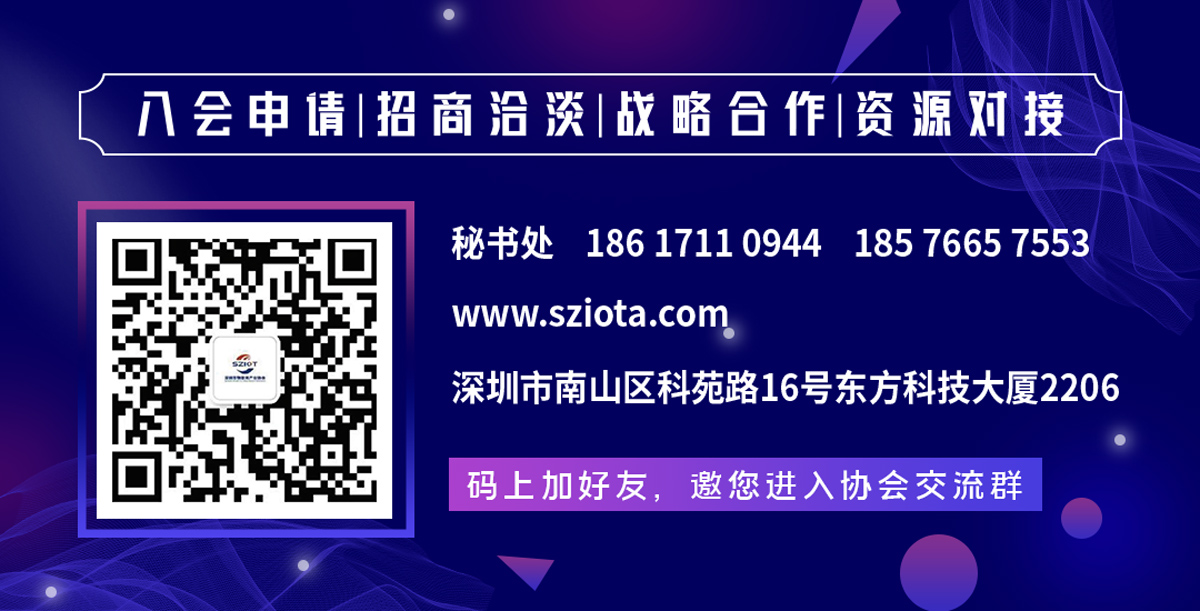

 登錄
登錄
 注冊(cè)
注冊(cè)






